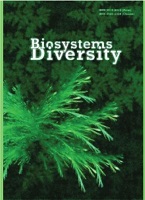Assortative mating in Gastropoda: A meta-analysis
Assortative mating in Gastropoda: A meta-analysis
Author(s): S.S. Kramarenko, A.S. KramarenkoSubject(s): Agriculture, Environmental interactions
Published by: Дніпропетровський національний університет імені Олеся Гончара
Keywords: mollusks; nonrandom mating; shell traits; reproductive strategy;
Summary/Abstract: The term ‘assortative mating’ denotes situations when the choice of a mating partner is nonrandom and the phenotypes across mate pairs are correlated, either positively or negatively. Assortative mating has been registered as a particular type of behaviourin many taxa of animals, including various vertebrate and invertebrate species. The aim of this study is to conduct a meta-analysis of published data concerning assortative mating in various taxa of Gastropoda. In total, we found 36 published peer-reviewed papers that consider the size-assortative mating in Gastropoda. 32 species belonging to different taxonomic groups of this class were studied, which provided 58 cases for further analysis. The range of estimates of the strength of assortment between individuals for species included into our meta-analysis (46 cases) is very wide: from –0.155 (Brephulopsis cylindrica) to +0.966 (Veronicella sloanii). Integrally, for the studied species of Gastropoda, the average weighted estimate of the strength of assortment between the sizes of copulating individuals was 0.381 ± 0.014. It revealed that virtually all the points representing individual studies form a funnel-shaped dispersion on a scatterplot that lies along the line representing the estimate of the generalized mean rgen = 0.343 and uniformly fill the funnel-shaped space between the lines of 95% confidence interval of the correlation coefficient for a given sample size adjusted for the overall mean. The distribution of the estimates of the correlation coefficient between copulating individuals among the various gastropod species has a shape close to the normal distribution (Kolmogorov-Smirnov's d = 0.061; P> 0.20). Moreover, most estimates are concentrated within a range from 0.2 to 0.6. We found that the probability of obtaining reliable estimates of the correlation coefficient between the sizes of copulating individuals is dependent upon the number of pairs used in the analysis (binary logistic regression: χ2 = 8.92; df = 1; P = 0.0028). It can be argued that the existence of the negative size-assortative mating in Gastropoda has not yet been proved. On the other hand, if only statistically significant cases of size-assortative mating are considered (37 cases out of 58, or 63.7%), the average weighted estimate of the strength of assortment between sizes of copulating mollusks is 0.439 ± 0.015 (95% confidence interval: 0.409–0.468). If we consider the mating system and the environment simultaneously, the positive size-assortativity is most pronounced among the gonochoristic snails living in the aquatic environment (0.448 ± 0.021) while among the aquatic hermaphroditic species it is the weakest (0.315 ± 0.028). Terrestrial hermaphrodites (land snails and slugs) take the middle position. The numerous examples of the assortative mating with respect to different morphological traits, either quantitative or qualitative, have been described in various species of aquatic and land snails.
Journal: Biosystems Diversity
- Issue Year: 31/2023
- Issue No: 3
- Page Range: 269-275
- Page Count: 7
- Language: English

